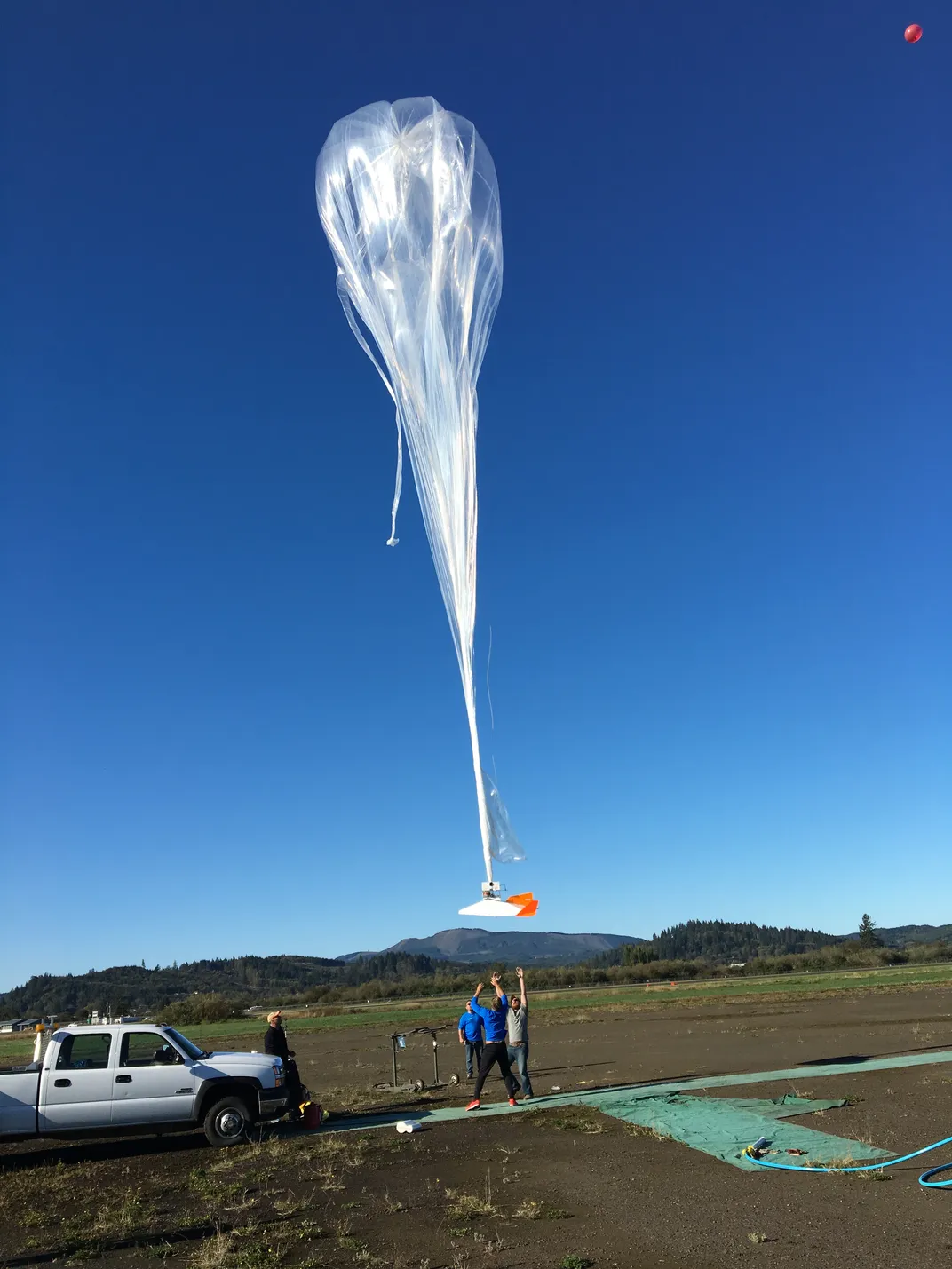The Drone That Mimics Spaceships
Want to test communications during atmospheric reentry without risking your spaceplane? There’s a drone for that.
/https://tf-cmsv2-smithsonianmag-media.s3.amazonaws.com/filer/80/25/8025245b-0b92-4e93-9e22-815b0eb28905/nasa_hassflight1.jpg)
Last September, a balloon floating 70,000 feet above the ground released a custom-built NASA drone. The High Altitude Shuttle System (HASS), an awkward-looking flying wing with a five-foot span and 22-pound payload, was meant to mimic a winged, suborbital spacecraft returning to Earth and re-entering controlled airspace. In other words, it was pretending to be something like Virgin Galactic’s SpaceShipTwo, one of several winged space vehicles that might enter commercial service in the coming years.
Paul De León, test campaign manager for NASA’s Flight Opportunities office, says the testers were specifically interested in how well Automatic Dependent Surveillance-Broadcast would work with suborbital flight. ADS-B, which will become the primary method of tracking nearly all aircraft by 2020, provides air traffic controllers with radar-like information where no radar exists by relying on the aircraft’s GPS and avionics to broadcast its precise location and altitude. But that system was designed for use only in FAA-controlled Class A airspace below 60,000 feet. Suborbital spacecraft will be descending through much higher altitudes.
Both HASS and the balloon that lifted it to 70,000 feet were built by Near Space Corporation, a research firm based at an airfield in Tillamook, Oregon. The tests themselves were conducted inside the Tillamook Unmanned Aerial Systems Test Range, a new and unique FAA-approved airspace with a ceiling of 130,000 feet. The range includes 6,000 square nautical miles within Class A airspace and more than 20,000 square miles above it, specifically intended to test near-space technologies.

While the recent test involved returning spacecraft, De León says HASS also can be used for a variety of space-related research. “It could [simulate microgravity] by flying parabolas [just as NASA airplanes used for astronaut training do] and it could simulate a spaceship flight path entering through the stratosphere below 30 kilometers.” And it could do that for less money than current, crew-carrying aircraft.
The HASS airframe is a “lifting body” design, which, despite its small size, is capable of closely matching the airspeeds and flight profiles of much larger spacecraft, such as Virgin Galactic’s Spaceship 2, as they come down through lower altitudes. Not only is HASS significantly cheaper to operate than the vehicles it mimics, it’s safer for everyone involved: it is quite small, and carries no combustible fuel.
When released from its balloon, HASS is in a flat attitude in relation to the ground. After falling for a few seconds, it develops enough airspeed to respond to control inputs. Using GPS navigation with its autopilot, HASS can either fly a programmed flight profile or be controlled remotely from the ground until it lands back at Tillamook. Following HASS deployment, the balloon releases its helium gas and descends by parachute; The balloon, which has its own ADS-B transponder, is typically recovered 20-30 miles away from its launch point.
Testing has proven successful, and De León says that more tests involving HASS and ADS-B for spacecraft are coming. This spring he hopes to conduct a drop from 90,000 feet. During an earlier test, De León says HASS briefly lost its GPS signal, which in turn affected ADS-B data. As a result the drone will be fitted with a second transmitting antenna. “That was a good lesson learned” says De León. “You’re not gonna send [new hardware] on its first flight to space. You take baby steps.”